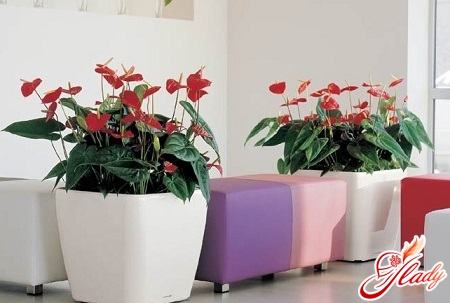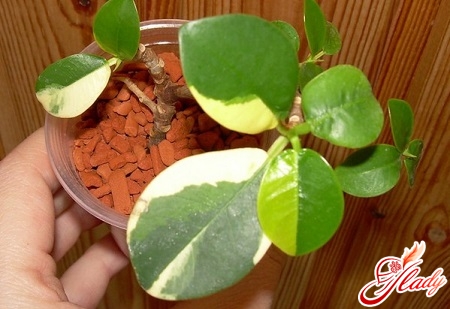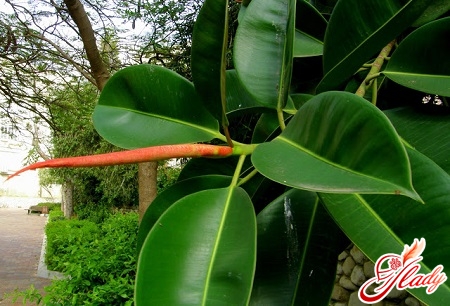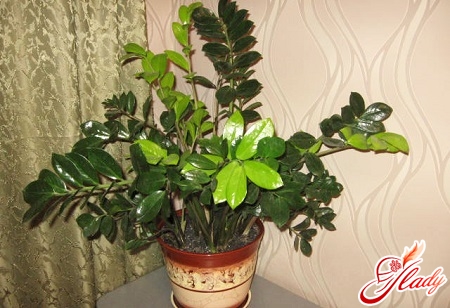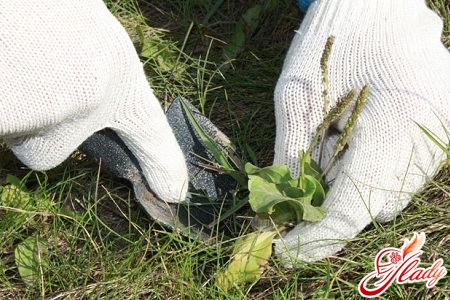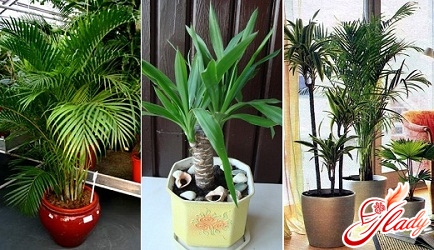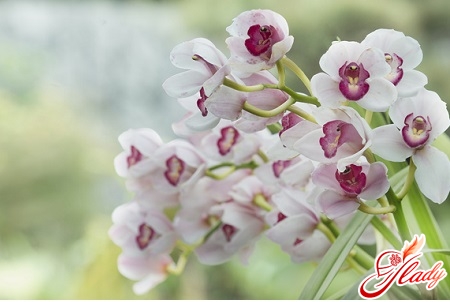 Many, many amateur flower growers dreamto add a magnificent orchid to your collection. The prospect is very tempting, but the notorious capriciousness of the flower and its demanding care stops you. Meanwhile, even among the pampered orchids there are quite unpretentious species that do not require any kind of reverent attitude and careful care. And among such unpretentious house flowers is the Cymbidium orchid (Symbidium), which has recently become very popular. Cymbidiums are actually very effective. Lush and bright flowers are one of the main advantages of these indoor plants. The second plus is easy care. However, making this unpretentious orchid bloom at home is oh so difficult! What kind of flower is this, how to care for it and achieve flowering? Let's figure it out.
Many, many amateur flower growers dreamto add a magnificent orchid to your collection. The prospect is very tempting, but the notorious capriciousness of the flower and its demanding care stops you. Meanwhile, even among the pampered orchids there are quite unpretentious species that do not require any kind of reverent attitude and careful care. And among such unpretentious house flowers is the Cymbidium orchid (Symbidium), which has recently become very popular. Cymbidiums are actually very effective. Lush and bright flowers are one of the main advantages of these indoor plants. The second plus is easy care. However, making this unpretentious orchid bloom at home is oh so difficult! What kind of flower is this, how to care for it and achieve flowering? Let's figure it out.
Features of cymbidiums
Note that the Cymbidium orchid is not calledone single plant. In fact, it is a whole genus of flowers of the orchid family. The homeland of these orchids is considered to be the tropical forests of Asia, and they are represented by more than three hundred species. Cymbidiums grow in Japan, Australia, India, and China. And not only in the humid tropics, but also in mountainous areas. This genus got its name from the Greek concept "kymbion", which is translated as "similar to a boat" or "boat-like". Cymbidiums received this name for the shape of the flower, or rather its lips. It is noteworthy that it was cymbidiums that became the first orchids mentioned in ancient manuscripts. In a botanical treatise from the Chinese Qing Dynasty, there is a recipe for making a healing decoction from the roots of these orchids. Another distinctive feature of this genus of orchids is the strong aroma of the flowers. Some gardeners note that cymbidiums smell even when they are not blooming. It was for their unusually strong aroma that these orchids were valued in Ancient China, where they cost a fortune, and all the work on breeding new varieties was aimed at enhancing the aroma. And in the gardens of Japanese and Chinese emperors, cymbidiums were grown as fragrant plants. It took a long time before gardeners appreciated not only the aroma, but also the decorativeness of these orchids. And in Europe, they began to cultivate them as beautifully flowering greenhouse plants. Unlike other orchids, cymbidiums will retain their decorativeness even without lush flowers. They manage to do this due to their narrow long leaves, which form a compact bush reminiscent of a bush of daffodils or irises. At home and with proper care, the leaves can last up to three years. And when blooming, cymbidiums look simply amazing - the flowers can stay on the peduncles for about ten weeks! Moreover, modern hybrids of these orchids bloom at different times of the year. So cymbidium can be considered an orchid that blooms all year round.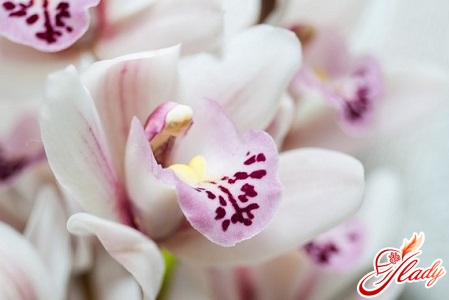
Types and varieties of cymbidiums
Oddly enough, the main types of this orchid are determined not by the colors and shapes of the flowers, but by the shape of the leaves.
- Cymbidium aloeleous has leathery strap-likeleaves up to thirty centimeters long. Yellow flowers with a purple center are collected in a brush, located on long hanging peduncles. Blooms in January-June. Flowering lasts about a month.
- Cymbidium lanceolate has broad leaves inThe shape of an ellipse, reaching a half-meter length. Small flowers with green petals and a white lip, dotted with red spots and dots, and red stripes on the sides, are located on short peduncles. Blossoms continuously from April to October.
- Cymbidium is a mucilaginous. The length of the leaves varies from thirty to ninety centimeters, and the peduncles do not exceed sixty centimeters long. Small fragrant flowers have green petals with purple specks and a central band and a pale yellow lip, the middle lobe of which is colored with purple stains. Blooms in January-April.
- Cymbidium Low reaches a height of ninetycentimeters. Lancet-shaped leaves are pointed at the ends. A long (up to one meter) flower stalk is thick and curved. Large flowers have yellow-green striped petals and a white three-lobed lip with a red spot in the form of the letter V. It blossoms from February to July for two months.
- Cymbidium Day. It is distinguished by a heavy inflorescence and a drooping stalk. Flowers with creamy petals and purple veins have a white strongly twisted lip. Blooms from August to December.
- Cymbidium Tracy - the largest orchid of thiskind. The belly leaves reach a length of sixty centimeters. Very fragrant large flowers of yellow-green color have a creamy lip with red spots and wavy edges. Blossoms in September-January for two to three weeks.
- Dwarf cymbidium is short (up totwenty centimeters) with pointed curved leaves. Flowers large, with red petals of elliptical form and three-lobed lip. Blooms for two to three weeks between December and March.
- Giant cymbidium is a rare speciesthis kind. It has keeled leaves sixty centimeters long and large flowers collected in a loose drooping inflorescence. Yellow-green petals are colored with purple stripes, and the creamy lip is decorated with bright spots and strips of red-purple color. Blooms for three to four weeks from November to April.
There are incredible hybrid varieties of cymbidiummany. Miniature and dwarf hybrids are preferred at home. Among them, the following common varieties can be distinguished: Liliput, Princess Rose, Emperor, Red Dwarf, Bride, Kirribilli, Levin and many others.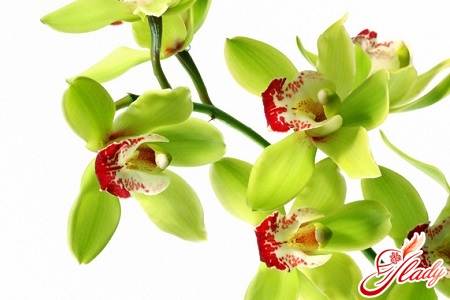
Care for cymbidiums
As we have already said, caring for cymbidiumsнеобременителен. В отличие от других орхидей они не нуждаются в каких-то особенных условиях. Тем не менее для цветения этих орхидей необходимы пусть и не особенные, но вполне определенные условия содержания. Это светолюбивые растения. Они любят хорошее освещение, но не переносят прямого солнца. Поэтому держать их нужно в светлом помещении, выставляя зимой на самое освещенное место, а летом притеняя от солнечных лучей. В зимнее время не лишней будет и искусственная подсветка. Выбирая место для расположения этих орхидей, помните о том, что они боятся сквозняков, но в тоже время любят проветривание. Обязательным условием цветения данных видов орхидеи является температурный режим. Так, например, им необходима зимовка в прохладных условиях. Так что в зимнее время эти орхидеи нужно держать в светлом помещении, где температура не превышает 11°C, но и не опускается ниже 8°C. Разница между ночной и дневной температурой – также необходимое условие цветения цимбидиумов. При обычной дневной температуре в активный для орхидей период (апрель-сентябрь) необходимо поддерживать ночную температуру в 14-15°C. Грамотный уход за этой орхидеей подразумевает и поддержание нужной влажности (около 60%). Поэтому растение необходимо опрыскивать каждый день. В этих целях рядом с цветочным горшком ставят декоративные фонтанчики и аквариумы, а во время отопительного сезона кладут на радиаторы мокрое полотенце. Поливают цимбидиумы мягкой водой комнатной температуры. Обильный полив этим орхидеям требуется лишь в активный период. А вот зимой их поливают реже, следя, чтобы земля в горшке не пересыхала. Если в период покоя продолжать поливать растение в прежнем режиме, то корни у него начнут гнить, а само растение погибнет. Однако недостаточный полив в зимнее время также может привести к гибели орхидеи. Поэтому необходимо следить за состоянием бульбочек – они не должны сморщиваться. Помимо правильного полива и грамотного температурного режима для цветения цимбидиумов необходимо своевременная подкормка. Удобряют их один раз в десять дней, взяв лишь половину дозы, рекомендованной производителями удобрений. Лучше всего подкармливать эти орхидеи жидкими удобрениями, предназначенными специально для данных растений. Уход за многими домашними растениями предполагает периодическую пересадку. Но в случае с орхидеями пересадка не является необходимым условием грамотного ухода. Пересаживают их только в самых крайних случаях, когда растения уже не помещаются в старом горшке. В остальное время нужно лишь обновлять верхний слой субстрата, заменяя его на новый. Причем при подсыпании грунта и при пересадке орхидеи ни в коем случае нельзя заглублять бульбы, иначе они начнут гнить, а растение погибнет. Размножают цимбидиумы только после цветения. При размножении чаще всего используют способ деления куста, разрезая корневище на несколько частей, каждая из которых должна иметь не менее трех бульб. Уход за орхидеей после рассаживания предполагает очень умеренный полив, а как только появятся новые ростки, растение поливают в прежнем режиме. К сожалению, правильный уход вовсе не является гарантией цветения этих орхидей. Чтобы заставить цвести цимбидиумы, им необходимо обеспечить стрессовую ситуацию (как в естественных условиях). И таким стрессом для этих орхидей станет перепад температуры в ночное и дневное время. Впрочем, плохой уход также не способствует бутонизации. Поэтому ухаживайте за своей орхидеей по всем правилам, выполняйте рекомендации по особенному температурному режиму и ждите, когда эта красотка порадует вас своим потрясающим цветением. А это обязательно произойдет! Советуем почитать:




